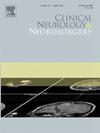Current status and influencing factors of fear disease progression in Chinese primary brain tumor patients: A mixed methods study
IF 1.8
4区 医学
Q3 CLINICAL NEUROLOGY
引用次数: 0
Abstract
Objective
In this study, we investigated the fear of disease progression in Chinese PBT patients and examined the correlation between sociodemographic, clinical, and psychological variables of patients with the fear of progression (FoP). Additionally, the study also evaluated the subjective experience of FoP in patients with primary brain tumors (PBT).
Methods
A mixed-methods study was conducted between March 2022 and December 2023, consisting of two phases: a quantitative approach in phase I, and a qualitative approach in phase II. In phase I, 305 patients with PBT filled in several questionnaires. An analysis was performed to identify potential predictors associated with FoP. In phase II, semi-structured interviews were conducted with 16 participants whose FoP scores were ≥ 34 in phase I to obtain information on their personal experiences with FoP.
Results
The results of the quantitative study showed that 192 (63 %) patients experienced high levels of FoP. The mean score of fear of progression was (34.02±6.78). Young age, high disease uncertainty, low social support, high negative coping and low positive coping are important factors affecting FoP in PBT patients. Qualitative research focused on three themes: triggers, coping styles, and the help needed.
Conclusion
Enhanced screening and assessment of FoP is essential to identify dysfunctionin PBT. Meanwhile, the implications of these predictors for enhanced healthcare professional education and patient self-management may help healthcare providers implement relevant interventions promptly and help patients reduce their FoP. However, due to limitations such as sample, reporting bias, and specific mechanisms between predictors and FOPs that have not yet been explored in depth, further exploration is needed in the future.
中国原发性脑肿瘤患者恐惧性疾病进展的现状及影响因素:混合方法研究
研究目的本研究调查了中国原发性脑肿瘤(PBT)患者对疾病进展的恐惧,并探讨了患者的社会人口学、临床和心理变量与疾病进展恐惧(FoP)之间的相关性。此外,研究还评估了原发性脑肿瘤(PBT)患者对疾病进展恐惧的主观体验:在 2022 年 3 月至 2023 年 12 月期间开展了一项混合方法研究,包括两个阶段:第一阶段采用定量方法,第二阶段采用定性方法。在第一阶段,305 名 PBT 患者填写了几份调查问卷。通过分析,确定了与 FoP 相关的潜在预测因素。在第二阶段,对第一阶段 FoP 分数≥ 34 分的 16 名参与者进行了半结构式访谈,以了解他们在 FoP 方面的个人经历:定量研究结果显示,有 192 名(63%)患者经历了高程度的 FoP。对病情恶化的恐惧平均得分为(34.02±6.78)分。年轻、疾病不确定性高、社会支持少、消极应对多和积极应对少是影响肺结核患者 FoP 的重要因素。定性研究集中于三个主题:诱因、应对方式和所需帮助:结论:加强对 FoP 的筛查和评估对于识别 PBT 患者的功能障碍至关重要。同时,这些预测因素对加强医护人员教育和患者自我管理的意义,有助于医护人员及时实施相关干预措施,帮助患者减少 FoP。然而,由于样本、报告偏倚以及预测因子与FOPs之间的具体机制等限制因素尚未得到深入探讨,未来还需要进一步探索。
本文章由计算机程序翻译,如有差异,请以英文原文为准。
求助全文
约1分钟内获得全文
求助全文
来源期刊

Clinical Neurology and Neurosurgery
医学-临床神经学
CiteScore
3.70
自引率
5.30%
发文量
358
审稿时长
46 days
期刊介绍:
Clinical Neurology and Neurosurgery is devoted to publishing papers and reports on the clinical aspects of neurology and neurosurgery. It is an international forum for papers of high scientific standard that are of interest to Neurologists and Neurosurgeons world-wide.
 求助内容:
求助内容: 应助结果提醒方式:
应助结果提醒方式:


